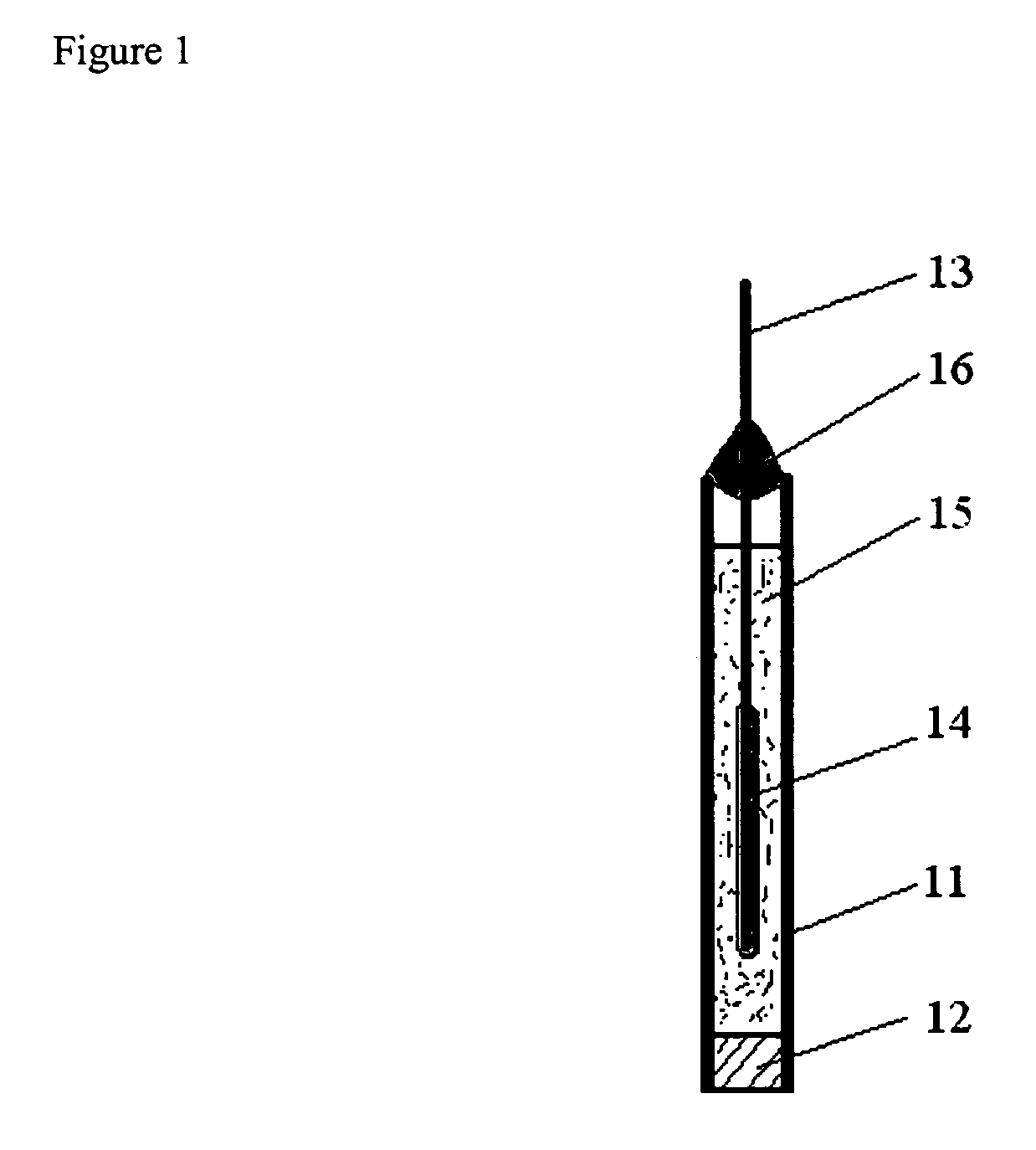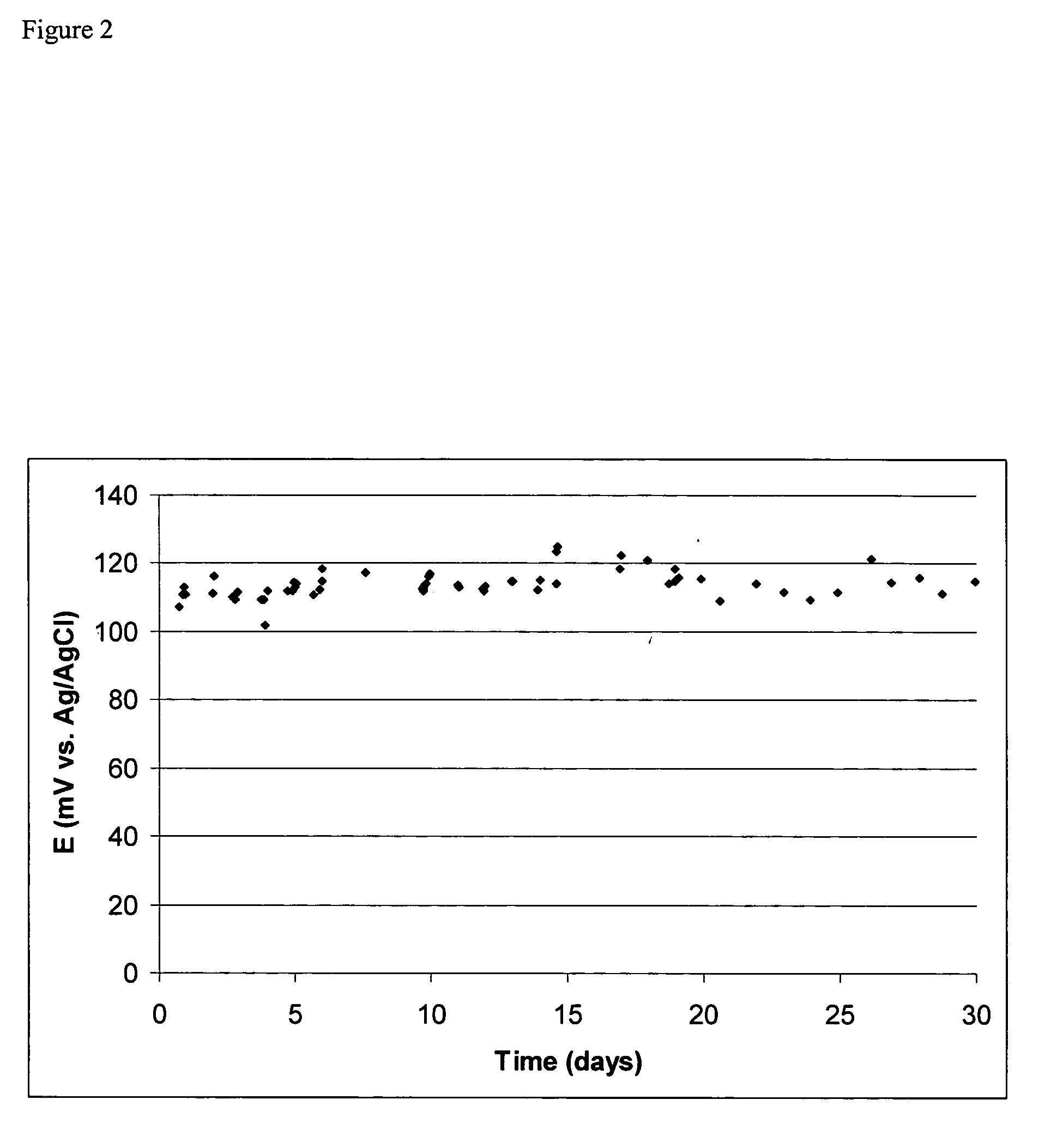Reference electrode
- Summary
- Abstract
- Description
- Claims
- Application Information
AI Technical Summary
Benefits of technology
Problems solved by technology
Method used
Image
Examples
example a
[0041] A silver / silver chloride reference electrode was prepared by coating a silver wire with silver chloride by electrolysis in saturated sodium chloride solution (Voltage ramp, 0 to 0.5 V, 10 mV / s vs. SCE), and inserting into a solution of poly(diallyldimethylammonium chloride) (Sigma—Aldrich Chemical Company, Milwaukee, Wis.) 20% w / w in a 2″ long 1 / 4″ OD vinyl tube closed at one end with a sintered plastic disk (Porex Corporation), and sealed at the other end by a silicone sealant. Lifetime data for this electrode is shown in FIG. 2. The X-axis is the time from manufacture of the electrode. The electrode was fabricated; left one day for the sealant to set and then the electrode was placed in tap water and left there. There is significant variation with time, however much of this variation comes from the comparison standard reference electrode used to make the measurements as judged by the fact that much of the variation was systematic between test electrodes. However, as can be ...
example b
[0042] A copper ion based polyelectrolyte reference electrode was be prepared by substituting the saturated copper sulfate solution for copper polysulfonic acid (prepared by reacting polysulfonic acid with stoichiometric amount of copper (II) carbonate). A reference electrode was constructed in similar manner to that described in Example A, except that a copper wire was used instead of the silver chloride coated silver wire and the electrolyte was substituted for the one described herein. This reference electrode was similarly tested. The lifetime data for this sensor in tap water are shown in FIG. 3. This electrode exhibited a much improved lifetime compared to simple copper / copper sulfate reference electrode of similar construction, which failed within a couple of days under similar test circumstances. This electrode required several days for the potential to equilibrate after being left in water, but once it equilibrated the potential remained stable with time. As can be seen fro...
PUM
 Login to View More
Login to View More Abstract
Description
Claims
Application Information
 Login to View More
Login to View More - R&D
- Intellectual Property
- Life Sciences
- Materials
- Tech Scout
- Unparalleled Data Quality
- Higher Quality Content
- 60% Fewer Hallucinations
Browse by: Latest US Patents, China's latest patents, Technical Efficacy Thesaurus, Application Domain, Technology Topic, Popular Technical Reports.
© 2025 PatSnap. All rights reserved.Legal|Privacy policy|Modern Slavery Act Transparency Statement|Sitemap|About US| Contact US: help@patsnap.com



